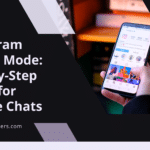
|
Getting your Trinity Audio player ready...
|
Technical SEO refers to the optimization of a website’s technical aspects to improve its visibility and ranking on search engine results pages (SERPs). It involves optimizing various components of a website, such as website architecture, mobile optimization, page speed, URL structure, on-page optimization, XML sitemap, robots.txt, canonicalization, and analytics and tracking.
Technical SEO is crucial for website ranking and visibility because search engines rely on these technical aspects to understand and index a website’s content. By optimizing these components, you can ensure that search engines can crawl and index your website effectively, leading to better visibility and higher rankings on SERPs.
Key Takeaways
- Technical SEO is important for improving your website’s visibility on search engines.
- Optimizing your website’s structure and architecture can improve its search engine ranking.
- Mobile optimization is crucial for reaching a wider audience and improving user experience.
- Page speed is a key factor in user experience and can impact your website’s search engine ranking.
- Creating SEO-friendly URLs and optimizing content can improve your website’s visibility on search engines.
Website Architecture: Ensuring your website’s structure is optimized for search engines
Website architecture plays a vital role in technical SEO as it determines how search engines crawl and index your website. A well-optimized website architecture helps search engines understand the hierarchy and organization of your website’s content, making it easier for them to index and rank your pages.
To optimize your website architecture, you should start by creating a clear and logical structure for your website. This means organizing your content into categories and subcategories, using descriptive headings and subheadings, and ensuring that each page is easily accessible from the main navigation menu.
Another important aspect of website architecture is internal linking. Internal links help search engines discover and navigate through your website’s pages. By strategically placing internal links throughout your content, you can guide search engines to important pages on your website and distribute link authority effectively.
Common mistakes to avoid in website architecture include having a complex or confusing structure, using excessive subfolders or subdomains, and neglecting to create a sitemap for easy navigation.
Mobile Optimization: Ensuring your website is mobile-friendly and responsive
Mobile optimization is crucial for technical SEO because search engines prioritize mobile-friendly websites in their rankings. With the increasing use of mobile devices for internet browsing, having a mobile-friendly website is essential to provide a positive user experience and improve your website’s visibility on mobile search results.
To optimize your website for mobile devices, you should ensure that it is responsive, meaning it adapts to different screen sizes and resolutions. This can be achieved by using responsive web design techniques, such as using fluid grids, flexible images, and CSS media queries.
You should also optimize your website’s loading speed on mobile devices. Mobile users expect fast-loading websites, and search engines take loading speed into account when ranking websites. To improve your website’s loading speed on mobile devices, you can compress images, minify CSS and JavaScript files, and leverage browser caching.
There are several tools available for testing the mobile-friendliness of your website, such as Google’s Mobile-Friendly Test and PageSpeed Insights. These tools provide insights and recommendations for improving your website’s mobile optimization.
Page Speed: Optimizing your website’s loading speed for better user experience
| Metrics | Description |
|---|---|
| Page Load Time | The time it takes for a page to fully load |
| Page Size | The total size of a page, including all resources |
| Number of Requests | The number of requests made to load a page |
| Time to First Byte (TTFB) | The time it takes for the server to respond with the first byte of data |
| Render-Blocking Resources | Resources that prevent a page from rendering until they are loaded |
| Compression | The process of reducing the size of resources before they are sent to the browser |
| Caching | The process of storing resources on the user’s device to reduce the number of requests made |
| Minification | The process of removing unnecessary characters from code to reduce its size |
| Image Optimization | The process of reducing the size of images without sacrificing quality |
Page speed is not only important for user experience but also for technical SEO. Search engines prioritize websites that load quickly because slow-loading websites can negatively impact user experience and increase bounce rates.
To improve your website’s loading speed, you can start by optimizing your images. Compressing images without compromising their quality can significantly reduce their file size and improve loading times. You can use image compression tools or plugins to automate this process.
Another way to improve page speed is by minifying CSS and JavaScript files. Minification removes unnecessary characters from these files, reducing their size and improving loading times. There are various online tools available for minifying CSS and JavaScript files.
Leveraging browser caching is another effective technique for improving page speed. By instructing browsers to cache certain files, such as images, CSS, and JavaScript files, you can reduce the number of requests made to the server when a user visits your website again.
There are several tools available for testing your website’s page speed, such as Google’s PageSpeed Insights and GTmetrix. These tools provide insights and recommendations for improving your website’s loading speed.
URL Structure: Creating SEO-friendly URLs for your website pages
URL structure is an important aspect of technical SEO as it helps search engines understand the content and relevance of a webpage. A well-optimized URL structure can also improve user experience and make it easier for users to navigate your website.
To create SEO-friendly URLs, you should use descriptive and keyword-rich URLs that accurately reflect the content of the page. Avoid using generic or meaningless URLs that do not provide any information about the page.
It is also important to keep your URLs short and simple. Long and complex URLs can be difficult to read and remember, both for users and search engines. Use hyphens to separate words in your URLs instead of underscores or spaces.
Avoid using dynamic parameters in your URLs whenever possible. Dynamic parameters, such as session IDs or tracking codes, can make URLs look messy and confusing. If you must use dynamic parameters, consider using URL rewriting techniques to create cleaner and more user-friendly URLs.
Common URL structure mistakes to avoid include using excessive subfolders, including unnecessary keywords in your URLs, and neglecting to redirect old or outdated URLs to new ones.
On-Page Optimization: Optimizing your content and meta tags for search engines

On-page optimization is a crucial aspect of technical SEO as it involves optimizing the content and meta tags of your webpages to make them more relevant and visible to search engines.
To optimize your content, you should start by conducting keyword research to identify relevant keywords that you can incorporate into your content. Use these keywords naturally throughout your content, including in headings, subheadings, and body text. However, avoid keyword stuffing, which is the excessive use of keywords that can negatively impact user experience and search engine rankings.
Optimizing your meta tags, including the title tag and meta description, is also important for on-page optimization. The title tag should accurately describe the content of the page and include relevant keywords. The meta description should provide a concise summary of the page’s content and entice users to click on your website in search results.
Another important aspect of on-page optimization is optimizing your images. Use descriptive file names and alt tags for your images to provide additional context to search engines. Compressing images without compromising their quality can also improve page loading speed.
Common on-page optimization mistakes to avoid include using duplicate or thin content, neglecting to optimize meta tags, and not using descriptive file names and alt tags for images.
XML Sitemap: Creating and submitting an XML sitemap for your website
An XML sitemap is a file that lists all the pages on your website and provides additional information about each page, such as the last modified date and priority. Creating and submitting an XML sitemap is important for technical SEO as it helps search engines discover and index your website’s pages more efficiently.
To create an XML sitemap, you can use various online tools or plugins that generate sitemaps automatically based on your website’s structure. Once you have created the XML sitemap, you should submit it to search engines, such as Google and Bing, through their respective webmaster tools.
Regularly updating and resubmitting your XML sitemap is important to ensure that search engines are aware of any changes or new pages on your website. This can help improve the indexing of your website’s pages and ensure that they appear in search results.
Robots.txt: Ensuring your website’s robots.txt file is properly configured
The robots.txt file is a text file that tells search engine crawlers which pages or sections of your website they should or should not crawl and index. Configuring your website’s robots.txt file correctly is important for technical SEO as it helps search engines understand how to crawl and index your website effectively.
To configure your website’s robots.txt file, you should start by identifying which pages or sections of your website you want to allow or disallow search engine crawlers from accessing. You can use the “Disallow” directive to specify which pages or directories should not be crawled and indexed.
It is important to note that misconfiguring your robots.txt file can unintentionally block search engine crawlers from accessing important pages on your website. Therefore, it is crucial to double-check your robots.txt file and test it using tools like Google’s Robots.txt Tester.
Common robots.txt mistakes to avoid include blocking important pages or directories, allowing access to sensitive or private information, and neglecting to update the robots.txt file when making changes to your website’s structure.
Canonicalization: Avoiding duplicate content issues with canonical tags
Duplicate content can negatively impact your website’s visibility and rankings on search engine results pages. Canonicalization is a technique used in technical SEO to avoid duplicate content issues by specifying the preferred version of a webpage.
Canonical tags are HTML tags that tell search engines which version of a webpage should be considered the canonical version. This is particularly useful when you have multiple versions of a webpage with similar content, such as different URLs or parameters.
To use canonical tags effectively, you should identify the preferred version of a webpage and add a canonical tag pointing to that version in the HTML code of all other versions. This helps search engines understand that the preferred version should be indexed and ranked, while the other versions should be ignored.
Common canonicalization mistakes to avoid include not using canonical tags when necessary, using incorrect or inconsistent canonical tags, and neglecting to update canonical tags when making changes to your website’s structure.
Analytics and Tracking: Implementing tracking codes and monitoring your website’s performance
Analytics and tracking are important for technical SEO as they provide valuable insights into your website’s performance and user behavior. By implementing tracking codes and monitoring your website’s performance, you can identify areas for improvement and make data-driven decisions to optimize your website.
To implement tracking codes, you can use tools like Google Analytics or other third-party analytics platforms. These tools provide a unique tracking code that you need to add to the HTML code of your website. Once the tracking code is implemented, you can start collecting data about your website’s visitors, their behavior, and the performance of your website.
Monitoring your website’s performance involves analyzing various metrics, such as page views, bounce rate, average session duration, and conversion rate. By regularly monitoring these metrics, you can identify areas where your website is underperforming and take appropriate actions to improve its performance.
There are several tools available for monitoring your website’s performance, including Google Analytics, Google Search Console, and third-party SEO tools. These tools provide detailed reports and insights about your website’s traffic, rankings, and user behavior.
Technical SEO plays a crucial role in improving a website’s visibility and ranking on search engine results pages. By optimizing various technical aspects of a website, such as website architecture, mobile optimization, page speed, URL structure, on-page optimization, XML sitemap, robots.txt, canonicalization, and analytics and tracking, you can ensure that search engines can crawl and index your website effectively.
To optimize your website’s technical SEO, you should focus on creating a well-optimized website architecture that is easy to navigate and understand. You should also ensure that your website is mobile-friendly and responsive to provide a positive user experience on mobile devices. Optimizing your page speed, URL structure, on-page content and meta tags, XML sitemap, robots.txt file, canonical tags, and implementing tracking codes are also important aspects of technical SEO.
By following the tips provided in this article and using the recommended tools, you can improve your website’s technical SEO and increase its visibility and ranking on search engine results pages. Implementing these best practices will not only benefit your website’s search engine optimization but also enhance the overall user experience.
If you’re looking for a comprehensive technical SEO checklist, Media Officers has got you covered. Their article on “Unlocking the Power of SEO: How to Boost Your Website’s Visibility in India” provides valuable insights and strategies to improve your website’s search engine rankings. From optimizing your website’s structure and meta tags to improving site speed and mobile-friendliness, this article covers all the essential elements of technical SEO. Check it out here for a step-by-step guide to enhancing your online presence.
FAQs
What is Technical SEO?
Technical SEO refers to the process of optimizing a website’s technical aspects to improve its search engine ranking and visibility. It involves optimizing website speed, mobile-friendliness, website architecture, and other technical factors that affect search engine crawling and indexing.
What is a Technical SEO Checklist?
A Technical SEO Checklist is a list of technical SEO tasks that website owners and SEO professionals can use to ensure that their website is optimized for search engines. It includes tasks such as optimizing website speed, fixing broken links, improving website architecture, and more.
Why is Technical SEO Important?
Technical SEO is important because it helps search engines crawl and index your website more effectively, which can improve your website’s visibility and search engine ranking. It also helps improve user experience by making your website faster, more mobile-friendly, and easier to navigate.
What are some Technical SEO Best Practices?
Some Technical SEO Best Practices include optimizing website speed, using structured data markup, fixing broken links, improving website architecture, optimizing images and videos, and making your website mobile-friendly.
How can I Improve my Website’s Technical SEO?
You can improve your website’s technical SEO by following a Technical SEO Checklist, optimizing website speed, fixing broken links, improving website architecture, optimizing images and videos, and making your website mobile-friendly. You can also use tools like Google Search Console and Google Analytics to monitor your website’s performance and identify areas for improvement.

























































